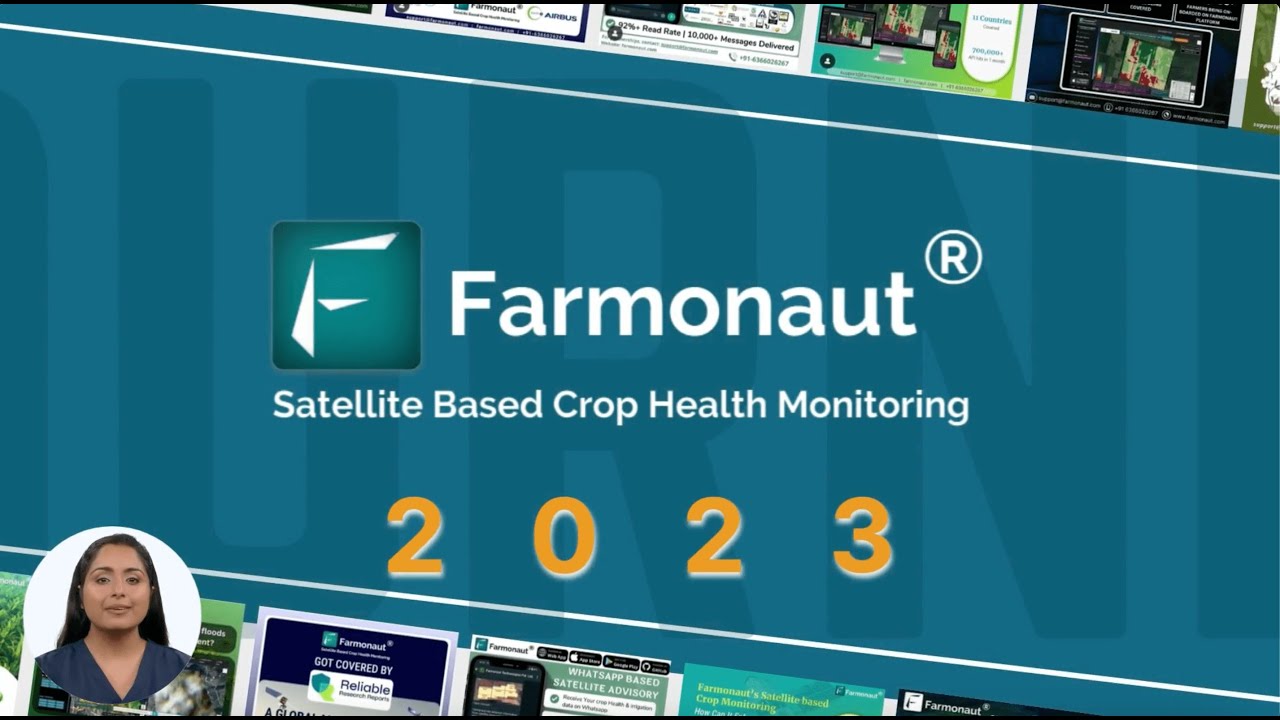Ethiopia’s Agricultural Revolution: Lessons for African Food Security and Sustainable Farming

“Ethiopia’s coffee exports have contributed to its transition from a food aid recipient to an agricultural exporter.”
In recent years, Ethiopia has emerged as a beacon of hope for sustainable agriculture in Africa, setting new standards for food security and agricultural productivity across the continent. The recent World Without Hunger Conference in Addis Ababa highlighted the nation’s remarkable transition from subsistence to commercial farming, offering valuable insights for other African countries striving to enhance their agricultural sectors. As we delve into Ethiopia’s agricultural revolution, we’ll explore the key factors driving this transformation and the lessons it holds for the future of African agriculture.
The Rise of Ethiopian Agriculture: A Model for Africa
Ethiopia’s journey from a nation plagued by famine to becoming an agricultural powerhouse is nothing short of inspirational. This transformation has been driven by a combination of factors, including:
- Adoption of agricultural mechanization
- Implementation of precision farming techniques
- Embracement of agricultural technology for developing countries
- Supportive government policies
- Increased investment in agricultural infrastructure
These elements have collectively contributed to Ethiopia’s success in boosting agricultural productivity and achieving food self-sufficiency. Let’s examine each of these factors in detail to understand how they’ve shaped Ethiopia’s agricultural landscape.
Agricultural Mechanization: Powering Productivity
One of the key drivers of Ethiopia’s agricultural transformation has been the widespread adoption of mechanization. By transitioning from traditional, labor-intensive farming methods to modern, mechanized techniques, Ethiopian farmers have significantly increased their productivity and efficiency.
Agricultural mechanization in Africa has long been a challenge due to factors such as limited access to capital and a lack of technical expertise. However, Ethiopia’s approach to overcoming these barriers offers valuable lessons for other African nations. The Ethiopian government has implemented policies to facilitate easier access to agricultural machinery through subsidies and partnerships with international manufacturers.
For instance, the Ethiopian Agricultural Transformation Agency (ATA) has been instrumental in promoting mechanization by:
- Establishing mechanization service centers across the country
- Providing training programs for farmers and technicians
- Facilitating leasing arrangements for agricultural equipment
These initiatives have not only increased the availability of modern farming equipment but have also created new employment opportunities in rural areas, contributing to overall economic growth.
Precision Farming: Maximizing Yields Through Technology
Another cornerstone of Ethiopia’s agricultural revolution has been the adoption of precision farming techniques. By leveraging advanced technologies, Ethiopian farmers are now able to optimize their resource use and maximize crop yields.
Precision farming techniques employed in Ethiopia include:
- Satellite-based crop monitoring
- Soil mapping and analysis
- Variable rate application of inputs
- Weather forecasting and climate-smart agriculture
These technologies allow farmers to make data-driven decisions, reducing waste and improving overall farm efficiency. For example, satellite-based crop monitoring systems, like those offered by Farmonaut, provide real-time insights into crop health, enabling farmers to identify and address issues promptly.

Embracing Agricultural Technology for Developing Countries
Ethiopia’s success in revolutionizing its agricultural sector can be largely attributed to its openness to adopting and adapting agricultural technologies tailored for developing countries. This approach has allowed Ethiopia to leapfrog traditional development stages and implement cutting-edge solutions that address the unique challenges faced by African farmers.
Some of the key technologies that have been instrumental in Ethiopia’s agricultural transformation include:
- Mobile-based agricultural advisory services
- Digital marketplaces connecting farmers to buyers
- Blockchain-based supply chain management systems
- IoT devices for monitoring soil moisture and crop health
These technologies have not only improved farm productivity but have also enhanced market access and transparency in the agricultural value chain. For instance, digital marketplaces have enabled smallholder farmers to bypass middlemen and sell their produce directly to consumers or larger buyers, thereby increasing their profit margins.
At Farmonaut, we recognize the importance of accessible agricultural technology for developing countries. Our platform offers affordable, satellite-based farm management solutions that can be accessed via Android, iOS, and web applications. To explore how our technology can benefit your farming operations, visit our web app or download our mobile apps:
Government Support: Cultivating an Enabling Environment
The Ethiopian government’s role in fostering an enabling environment for agricultural growth cannot be overstated. Through a combination of policy reforms, infrastructure development, and targeted investments, the government has created a conducive atmosphere for both small-scale farmers and large agribusinesses to thrive.
Key government initiatives that have supported Ethiopia’s agricultural revolution include:
- Land reform policies that provide farmers with secure land tenure
- Investments in rural infrastructure, including roads and storage facilities
- Establishment of agricultural research centers and extension services
- Promotion of public-private partnerships in the agricultural sector
These efforts have not only boosted agricultural productivity but have also created a more resilient and sustainable farming sector. For example, improved rural infrastructure has reduced post-harvest losses and enhanced market access for farmers, while research centers have developed high-yielding, climate-resilient crop varieties.
Food Security Solutions: Ethiopia’s Holistic Approach
Ethiopia’s success in achieving food security offers valuable lessons for other African nations grappling with similar challenges. The country’s holistic approach to food security encompasses various aspects, including:
- Diversification of crop production
- Investment in irrigation and water management
- Promotion of climate-smart agricultural practices
- Development of robust food storage and distribution systems
By addressing food security from multiple angles, Ethiopia has not only increased its agricultural output but has also improved the resilience of its food systems to external shocks such as climate change and market fluctuations.
“Ethiopia’s agricultural revolution has helped the country achieve food self-sufficiency, reducing hunger for millions of its citizens.”
Commercial Farming Transition: From Subsistence to Market-Oriented Agriculture
One of the most significant aspects of Ethiopia’s agricultural transformation has been the shift from subsistence farming to commercial agriculture. This transition has been crucial in improving farmers’ livelihoods and contributing to the country’s overall economic growth.
The commercial farming transition in Ethiopia has been characterized by:
- Increased focus on high-value crops and export-oriented production
- Development of agro-processing industries
- Improved access to finance and credit for farmers
- Formation of farmer cooperatives and associations
These changes have enabled Ethiopian farmers to move beyond producing solely for household consumption and enter lucrative domestic and international markets. The success of Ethiopia’s coffee sector, which has become a major export earner, is a prime example of this transition.
Agricultural Productivity Improvement: Leveraging Technology and Innovation
At the heart of Ethiopia’s agricultural revolution lies a concerted effort to improve agricultural productivity. This has been achieved through a combination of technological innovation, improved farming practices, and capacity building initiatives.
Key factors contributing to Ethiopia’s agricultural productivity improvement include:
- Adoption of improved seed varieties and fertilizers
- Implementation of conservation agriculture techniques
- Use of precision agriculture technologies
- Enhanced pest and disease management strategies
These efforts have resulted in significant increases in crop yields and overall agricultural output. For instance, the adoption of improved wheat varieties has led to a doubling of yields in some regions of the country.
To illustrate the impact of these improvements, let’s examine a table comparing key agricultural indicators before and after Ethiopia’s agricultural transformation:
| Metric | Pre-Transformation (est. 2010) | Post-Transformation (est. 2023) |
|---|---|---|
| Agricultural GDP contribution (%) | 41.5 | 35.2 |
| Coffee export volume (tons) | 180,000 | 300,000 |
| Food self-sufficiency rate (%) | 70 | 90 |
| Mechanization adoption rate (%) | 15 | 45 |
| Precision farming implementation (hectares) | 5,000 | 100,000 |
| Smallholder farmers using technology (%) | 10 | 60 |
| Agricultural investment (USD millions) | 500 | 2,000 |
| Crop yield increase (%) | Baseline | 75 |
| Rural poverty rate (%) | 45 | 25 |
| Number of agribusiness startups | 50 | 500 |
This table clearly illustrates the significant progress Ethiopia has made in various aspects of its agricultural sector, from increased exports to improved food self-sufficiency and reduced rural poverty.
Agribusiness Investment Opportunities: Fueling Growth and Innovation
Ethiopia’s agricultural transformation has created numerous opportunities for agribusiness investment, attracting both domestic and international investors. These investments have played a crucial role in modernizing the sector and creating value-added opportunities along the agricultural value chain.
Key areas for agribusiness investment in Ethiopia include:
- Agro-processing and value addition
- Agricultural input production and distribution
- Cold chain and logistics infrastructure
- Agricultural technology and innovation
The Ethiopian government has also implemented various incentives to attract agribusiness investments, such as tax holidays, duty-free import of capital goods, and the establishment of dedicated agricultural investment parks.
Coffee Production Technology: Brewing Success in Ethiopia’s Flagship Crop
Coffee, Ethiopia’s most famous agricultural export, has been at the forefront of the country’s agricultural revolution. The adoption of modern coffee production technology has significantly improved both the quality and quantity of Ethiopian coffee exports.
Advancements in coffee production technology in Ethiopia include:
- Improved coffee varietals resistant to diseases and pests
- Modern processing techniques for wet and dry coffee processing
- Precision irrigation systems for coffee plantations
- Advanced quality control and grading technologies
These technological improvements have not only increased coffee yields but have also enhanced the consistency and quality of Ethiopian coffee, solidifying its position in the global specialty coffee market.
African Agricultural Infrastructure Development: Building the Foundation for Growth
Ethiopia’s success in transforming its agricultural sector is underpinned by significant investments in agricultural infrastructure. This focus on infrastructure development has been crucial in addressing longstanding challenges faced by African farmers, such as limited market access and high post-harvest losses.
Key areas of agricultural infrastructure development in Ethiopia include:
- Rural road networks connecting farms to markets
- Modern storage facilities and warehouses
- Irrigation systems and water management infrastructure
- Agricultural research and extension facilities
These infrastructure investments have not only improved agricultural productivity but have also created new economic opportunities in rural areas, contributing to overall rural development.
Lessons for African Food Security and Sustainable Farming
Ethiopia’s agricultural revolution offers valuable lessons for other African countries seeking to enhance their food security and develop sustainable farming practices. Some key takeaways include:
- Holistic approach: Addressing agricultural development from multiple angles, including technology adoption, policy reform, and infrastructure development.
- Government commitment: Strong government support and targeted policies are crucial for creating an enabling environment for agricultural growth.
- Technology adoption: Embracing appropriate agricultural technologies can significantly boost productivity and efficiency.
- Private sector engagement: Encouraging private sector investment and partnerships can accelerate innovation and market development in the agricultural sector.
- Focus on sustainability: Implementing climate-smart and environmentally friendly farming practices ensures long-term agricultural resilience.
By learning from Ethiopia’s experience, other African nations can chart their own paths towards agricultural transformation and food security.
The Role of Technology in African Agriculture: Farmonaut’s Contribution
As we’ve seen throughout Ethiopia’s agricultural journey, technology plays a crucial role in modernizing farming practices and improving productivity. Companies like Farmonaut are at the forefront of this technological revolution in African agriculture, offering innovative solutions that address the unique challenges faced by farmers on the continent.
Farmonaut’s satellite-based farm management platform provides valuable tools for precision agriculture, including:
- Real-time crop health monitoring
- AI-based advisory systems
- Blockchain-based traceability solutions
- Resource management tools
These technologies enable farmers to make data-driven decisions, optimize resource use, and improve overall farm productivity. To learn more about how Farmonaut’s solutions can benefit your agricultural operations, visit our web application or explore our API for custom integrations.
The Future of African Agriculture: Building on Ethiopia’s Success
As we look to the future of African agriculture, Ethiopia’s experience provides a roadmap for sustainable growth and development. By embracing technology, investing in infrastructure, and implementing supportive policies, other African nations can replicate Ethiopia’s success and achieve their own agricultural revolutions.
Key areas for future development in African agriculture include:
- Continued investment in agricultural research and innovation
- Expansion of digital agriculture and precision farming techniques
- Development of regional agricultural value chains and markets
- Strengthening of agricultural education and training programs
- Promotion of sustainable and climate-resilient farming practices
By focusing on these areas and learning from Ethiopia’s experience, African countries can build resilient, productive, and sustainable agricultural sectors that contribute to food security and economic growth across the continent.
Conclusion: Cultivating a Brighter Future for African Agriculture
Ethiopia’s agricultural revolution serves as an inspiring example of what can be achieved through a combination of technological innovation, policy support, and strategic investments. As other African nations look to enhance their own agricultural sectors, the lessons learned from Ethiopia’s experience can provide valuable guidance and inspiration.
By embracing sustainable agriculture in Africa, leveraging agricultural technology for developing countries, and implementing comprehensive food security solutions, the continent can move towards a future of greater agricultural productivity, improved food security, and sustainable economic growth.
As we’ve seen, companies like Farmonaut play a crucial role in this transformation by providing accessible and affordable precision agriculture solutions. To explore how Farmonaut can support your agricultural endeavors, visit our website or try our mobile applications:
Together, we can cultivate a brighter, more sustainable future for African agriculture.
FAQs
- What were the main drivers of Ethiopia’s agricultural revolution?
The main drivers included government support, adoption of agricultural mechanization, implementation of precision farming techniques, and investments in agricultural infrastructure and technology. - How has Ethiopia’s agricultural transformation impacted food security?
Ethiopia’s agricultural revolution has significantly improved food security by increasing agricultural productivity, diversifying crop production, and developing robust food storage and distribution systems. - What role does technology play in Ethiopia’s agricultural success?
Technology has been crucial, enabling precision farming, improving crop monitoring, enhancing market access through digital platforms, and optimizing resource use in farming operations. - How can other African countries learn from Ethiopia’s experience?
Other African countries can learn by adopting a holistic approach to agricultural development, investing in appropriate technologies, implementing supportive policies, and encouraging private sector engagement in agriculture. - What is the importance of agricultural mechanization in Africa?
Agricultural mechanization is vital for increasing productivity, reducing labor intensity, and enabling farmers to cultivate larger areas more efficiently, ultimately contributing to food security and economic growth. - How has Ethiopia’s coffee industry benefited from technological advancements?
Ethiopia’s coffee industry has benefited through improved varietals, modern processing techniques, precision irrigation, and advanced quality control technologies, enhancing both yield and quality of coffee production. - What are some key challenges in implementing precision farming in African countries?
Key challenges include limited access to technology, lack of technical expertise, high initial costs, and the need for reliable internet connectivity in rural areas. - How does Farmonaut contribute to agricultural development in Africa?
Farmonaut provides affordable, satellite-based farm management solutions that enable farmers to monitor crop health, optimize resource use, and make data-driven decisions, contributing to increased agricultural productivity. - What are some emerging trends in African agriculture?
Emerging trends include the adoption of climate-smart agriculture, increased use of digital technologies, development of agribusiness startups, and a focus on sustainable and regenerative farming practices. - How can smallholder farmers benefit from agricultural technologies?
Smallholder farmers can benefit from agricultural technologies by accessing real-time crop information, optimizing input use, connecting to markets through digital platforms, and implementing precision farming techniques to improve yields and reduce costs.
Farmonaut: Empowering African Agriculture with Technology
As we’ve explored Ethiopia’s agricultural revolution and its implications for African food security and sustainable farming, it’s clear that technology plays a crucial role in driving progress. Farmonaut, as a leading provider of agricultural technology solutions, is well-positioned to support this transformation across Africa.
Our platform offers a range of tools that can benefit farmers, agribusinesses, and policymakers in their efforts to improve agricultural productivity and sustainability. Here’s how Farmonaut can contribute to the ongoing agricultural revolution in Africa:
- Satellite-Based Crop Monitoring: Our advanced satellite imagery analysis provides real-time insights into crop health, helping farmers identify and address issues promptly.
- AI-Powered Advisory System: Our Jeevn AI system delivers personalized recommendations based on crop conditions, weather forecasts, and best practices in agriculture.
- Blockchain-Based Traceability: We offer solutions to enhance transparency and trust in agricultural supply chains, crucial for accessing international markets.
- Resource Management Tools: Our platform helps optimize the use of water, fertilizers, and other inputs, contributing to more sustainable farming practices.
To explore how Farmonaut can support your agricultural endeavors, whether you’re a small-scale farmer or a large agribusiness, visit our web application or check out our mobile apps:
For developers and businesses looking to integrate our satellite and weather data into their own systems, we also offer a comprehensive API. You can find detailed information in our API Developer Docs.
By leveraging Farmonaut’s technology, African farmers and agribusinesses can take significant steps towards achieving the kind of agricultural transformation we’ve seen in Ethiopia. Together, we can work towards a more productive, sustainable, and food-secure future for Africa.
Embracing the Future of African Agriculture
As we conclude our exploration of Ethiopia’s agricultural revolution and its lessons for African food security and sustainable farming, it’s clear that the future of African agriculture is bright. By embracing technological innovations, implementing supportive policies, and fostering collaboration between stakeholders, countries across the continent can achieve significant improvements in agricultural productivity and sustainability.
The journey towards agricultural transformation is ongoing, and each country will face its unique challenges and opportunities. However, by learning from success stories like Ethiopia and leveraging cutting-edge technologies such as those provided by Farmonaut, African nations can accelerate their progress towards food security, economic growth, and sustainable development.
We invite you to be part of this exciting transformation. Whether you’re a farmer, an agribusiness owner, a policymaker, or simply someone interested in the future of African agriculture, there’s a role for you to play. Explore our solutions, stay informed about the latest developments in agricultural technology, and consider how you can contribute to the ongoing revolution in African farming.
Together, we can cultivate a more prosperous and sustainable future for African agriculture, one farm at a time.




















